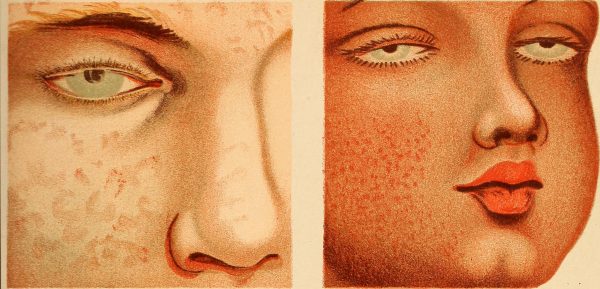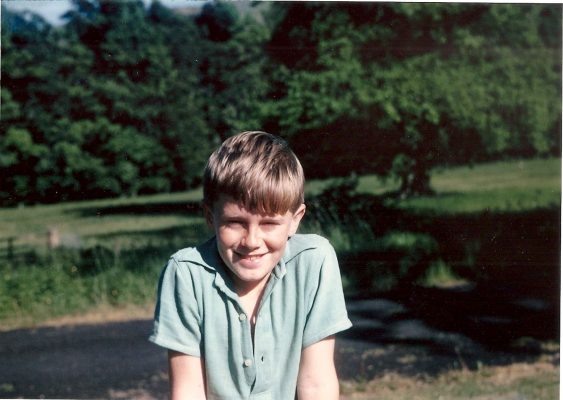Sheila Heti’s last novel, How Should a Person Be?, opens with the question of its title. ‘For years and years I asked it of everyone I met,’ the narrator says. The problem with this question, as she discovers, is that it’s infinitely open-ended; no two people give the same answer, or behave in the same way. The unnamed narrator of Motherhood, who shares various biographical details with the narrator of How Should a Person Be?, and with Heti herself, is also preoccupied with a question. This question is a problem for the opposite reason: it has only two possible answers, and they’re mutually exclusive. Should she have a child? And while a woman can keep wondering how she should be for the whole of her life, whether to reproduce is a decision that can’t wait forever. The narrator of Motherhood is in her mid-thirties. The time for deciding is now.
She lives in Toronto with her partner, Miles. He has a child from a previous relationship and no desire for another, but he’ll have a baby with the narrator if it’s what she really wants. But how can she tell? On the one hand, she has never dreamed of being a mother. On the other, she does sometimes dream that she has a child, and sometimes when she wakes from these dreams she feels happy. But she’s a writer, committed to a life of art and freedom; how can she allow a child to interrupt that life? (Miles warns her darkly that one can be a great parent or a great artist, but not both.) And yet, might her writing not suffer if she turns away from what increasingly seems to her ‘the central experience of life’? Everywhere she turns, her female friends are having babies. But when she visits them, she feels alienated and bored. But what could be worse than to fail to recognise the desire for a baby until it’s too late, and to spend the rest of one’s life in regret? Watching her agonise, Miles suggests that she write a book about motherhood. Motherhood is that book, a thoughtful, claustrophobic novel dominated by its narrator’s increasingly anxious and miserable back-and-forth. Who will she be if she has a child? Who will she be if she doesn’t? What kind of a woman? What kind of a writer?
On first encounter, Motherhood seems to belong with the throng of recent novels and memoirs that engage with parenthood, either by portraying the early days and years of mothering, or by describing the process of building a life without children. But these works, by writers including Jenny Offill, Sarah Manguso, Rivka Galchen, Meaghan O’Connell and Rebecca Solnit, as well as the contributors to the 2015 anthology Selfish, Shallow, and Self-Absorbed: Sixteen Writers on the Decision Not to Have Kids, are all written from the vantage-point of having made a decision about reproducing, one way or the other. Motherhood is unusual in that its protagonist does not yet know what she will decide, or how one reaches a decision at all.
In her 2015 article ‘What You Can’t Expect When You’re Expecting’, the philosopher L.A. Paul argues that the way in which most people choose whether or not to have a child – by comparing how they imagine their future selves will feel as parents versus how they imagine they will feel as non-parents – is hopelessly irrational. The experience of having children is, to use Paul’s phrase, personally transformative: it changes an individual’s core beliefs, values and preferences so that, pre-transformation, it is impossible for her to predict with any accuracy what her post-transformation self might feel or want. Heti’s character is at some level aware of this paradox, and perhaps this is why, alongside trying to predict the desires of her future self in all the ordinary ways – self-reflection, talking to friends who are parents and friends who aren’t, assessing the strength of her romantic relationship – she also pursues less conventional decision-making strategies: visiting a psychic, having her tarot cards read, dream analysis, flipping coins.
At the same time, the narrator pushes back against the idea of having a child as uniquely transformative: ‘life will give me experiences no matter what I choose… life will always put me in situations, and show me new things, and take me to darknesses I wouldn’t choose to see, and all sorts of treasures of knowledge I cannot comprehend.’ Many of the reviews of Motherhood have praised the clarity with which it articulates the struggle to see and to have one’s child-free life seen by others as rich and valuable. But while the novel investigates the factors – practical, physical, philosophical, political, social and moral – that are particular to a woman’s decision to have or not to have a child, Heti also offers an inquiry into decision-making more generally, into how a particular kind of decision gets made and what kind of novel it produces.
I won’t be in a position to have a baby for at least another couple of years and so, though I think every day about whether I want children, there’s a lack of urgency to my thoughts on the subject. But reading Motherhood reminded me of other, more pressing decisions that I’ve agonised over, or watched my friends agonise over. Should I do a PhD? (Once I started doing a PhD, this question was replaced by its inverse: should I stop doing a PhD?) Should I break up with him? Should I quit my stable job and pursue my unstable dream?As with the dilemma at the centre of Motherhood, the only possible answers to our questions are yes and no; they are life-altering but not, usually, life-threatening; there are strongly desirable elements to both outcomes. (Of course, there are circumstances in which answers to these questions might be life-threatening, just as there are individuals for whom there is nothing desirable about having a baby. These circumstances are not, however, those of Heti’s narrator.) After a certain point, there is no new information – or at least, no new information that will settle the question to the asker’s satisfaction. It’s hard to accept that no matter how exhaustively you tabulate the pros and cons, or how deeply you meditate on your heart’s desire, there isn’t, necessarily, a right answer to whether you should have a child, or do a PhD, or leave your partner. Even if one is fortunate enough to realise that yes outweighs no or vice versa (it’s apparent fairly early on, for example, that Heti’s character wants to be child-free more than she wants to be a mother), how does one reconcile oneself to renouncing the joys of the path not taken? What can one do but comb through the evidence again and again, hoping to find some overlooked thing that will produce peace of mind?
This kind of decision-making is tedious and frustrating for the person involved in it, and often for the person listening to the person involved in it (certainly Miles seems to find it so). Such decision-making also poses a problem for the novelist who takes it as her subject: how can she avoid making her novel frustrating and tedious too? Or must she allow those qualities to be present in her novel? Motherhood is highly repetitive and yes, at times frustrating. Much of it is diaristic in style, its sections beginning with an update on recent events or the narrator’s emotional state: ‘Yesterday, Miles and I had a long conversation about women artists having children… Last night, I had a really intense dream [about] my (future) baby… The feeling of tears was in me when I woke… I feel terrible today – so tired… Low tear count today, although the feeling of tears was in me yesterday…I have been in a nervous panic all afternoon’. Variety comes from the way in which Heti incorporates all her narrator’s methods of soul-searching, both rational and spiritual, into the novel’s form: one chapter consists almost entirely of the tarot reader’s pronouncements, alongside images of the dealt cards, while throughout the book, diary-like entries are interrupted by the narrator’s coin-tossing sessions. Simplifying a technique used to interpret the I Ching, she asks a question and throws three coins; two or three heads mean yes, two or three tails no. (A teasing note at the beginning of the book tells us that ‘While not everything in books is true, in this book, all results from the flipping of coins are true.’)
Like the question of whether to have a child, the coins only permit two mutually exclusive answers, and the opening of the novel seems to illustrate the limits of such inquiry:
Is this book a good idea?
yes
Is the time to start it now?
yes
Here, in Toronto?
yes
So then there’s nothing to be worried about?
yes
Yes, there’s nothing to be worried about?
no
Should I be worried?
yes
But as the narrator continues to use the coins, she realises that they are ‘a way of interrupting my habits of thought… When I get an answer I didn’t expect, I have to push myself to find another answer… to dig a little deeper, to be thrown off.’
Heti’s character does dig deeper, examining all her assumptions and fears about motherhood and about what a child-free life might look like. She grapples with what it is to have as well as to be a mother, to be as well as to have a child. The narrator knows – the psychic has confirmed it – that the sadness she carries within her is inherited from her mother and grandmother (her grandmother was a Holocaust survivor whose thwarted medical ambitions shaped her daughter’s life). Would having a child end that sadness? Or simply pass it on to a new generation? Can she be a good daughter in a way that does not involve producing another daughter?
Fortunately, the answer to the last question turns out to be yes: she can give her mother the book she has written, the book that is as much about having as about deciding whether to be a mother. The narrator even finds a way to lay down her own sadness, a laying down that enables her both to finish her book and to realise that she will not have a child: whatever the state of her fertility, ‘the moment has honestly passed. When the sun has set, the meal you eat cannot be called breakfast.’
In a more conventional novel, this realisation would come about as a result of the struggle that preceded it. One of the narrator’s inspirations is the story of Jacob wrestling with the angel: he wrestles, because of his wrestling he receives a blessing, he goes forth a new man. Her own wrestling does bring about many moments of insight, even epiphanies, but by the time she writes them down they already strike her as less significant, or less vivid; even if she knows them to be true, she is unable to hold on to their truth long enough to come to terms with a child-free life. In order to do so, she needs to find something external to the question. For the narrator, this external thing is antidepressants, which she starts taking when she realises that her ever-repeating cycles of misery and contentment are tied to the rhythms of her menstrual cycle; mood and fertility are bound up with one another in a way that goes far beyond her anxiety over whether to have a child. This realisation comes 50 pages from the end of the book; five pages after the narrator starts taking the antidepressants, the world seems ‘bright and joyous’. She knows it’s the drugs, of course, but that doesn’t make her feel the change any less keenly: antidepressants turn out to be, like motherhood, a transformative experience. Thus transformed, she is able to do what she has known she should do all along: stop imagining different futures for herself and instead inhabit the present, ‘mak[ing] peace with the way things are, given what I know about life from actually living.’ Was she unable to decide whether to have a child because she was depressed, or was she depressed because she couldn’t decide whether to have a child? She doesn’t even ask the question; it’s not important.
Perhaps the irrelevance of this question is why most reviews of Motherhood haven’t mentioned the sudden appearance of drugs in the novel, and the sudden resolution they bring about. But the narrator’s use of antidepressants raises other questions. How do we understand character – both in a novel and in real life, both as something that remains stable and as something that develops through reflection and experience – if an individual’s experience and growth are attributable first to hormones and then to drugs? This question feels particularly dangerous, of course, when the individual is a woman: even to hint that a woman’s emotions and desires are hormonally-produced, and therefore untrustworthy, is to play into the oldest and most damaging stereotypes. In Motherhood, one possible answer to this question is that character inheres in that indefinable thing writers call voice: no matter her psychological state, the narrator’s deliberate, direct, almost-naïve style stays with her, and with us.
More difficult is how to understand the narrator’s trajectory as a narrative, and as something that has produced a novel. Even in the most formally inventive novel, we’re accustomed to a certain unfolding of cause and effect. In How Should A Person Be?, for example, Sheila’s experiences (her friendships and romantic relationships, her travel and her work) lead her to a place where she does have a sense of who she should or might want to be. The same cannot be said of Motherhood, a predicament that the narrator acknowledges: ‘What kind of story is it when a person goes down, down, down and down – but instead of breaking through and seeing the truth and ascending, they go down, then they take drugs, and then they go up?’ She doesn’t know, and perhaps the only answer is that it’s the kind of story that produces a novel like Motherhood: by turns frustrating and illuminating; formally and stylistically rough, with a roughness that both is and allows philosophical seriousness; ultimately steadfast in its resistance to the expected narrative of a woman’s life. There will be struggle and transformation, in life as in a work of art; Motherhood asks us to consider what it would mean to see struggle and transformation as worthy of attention not just in relation to one another, but in themselves.




